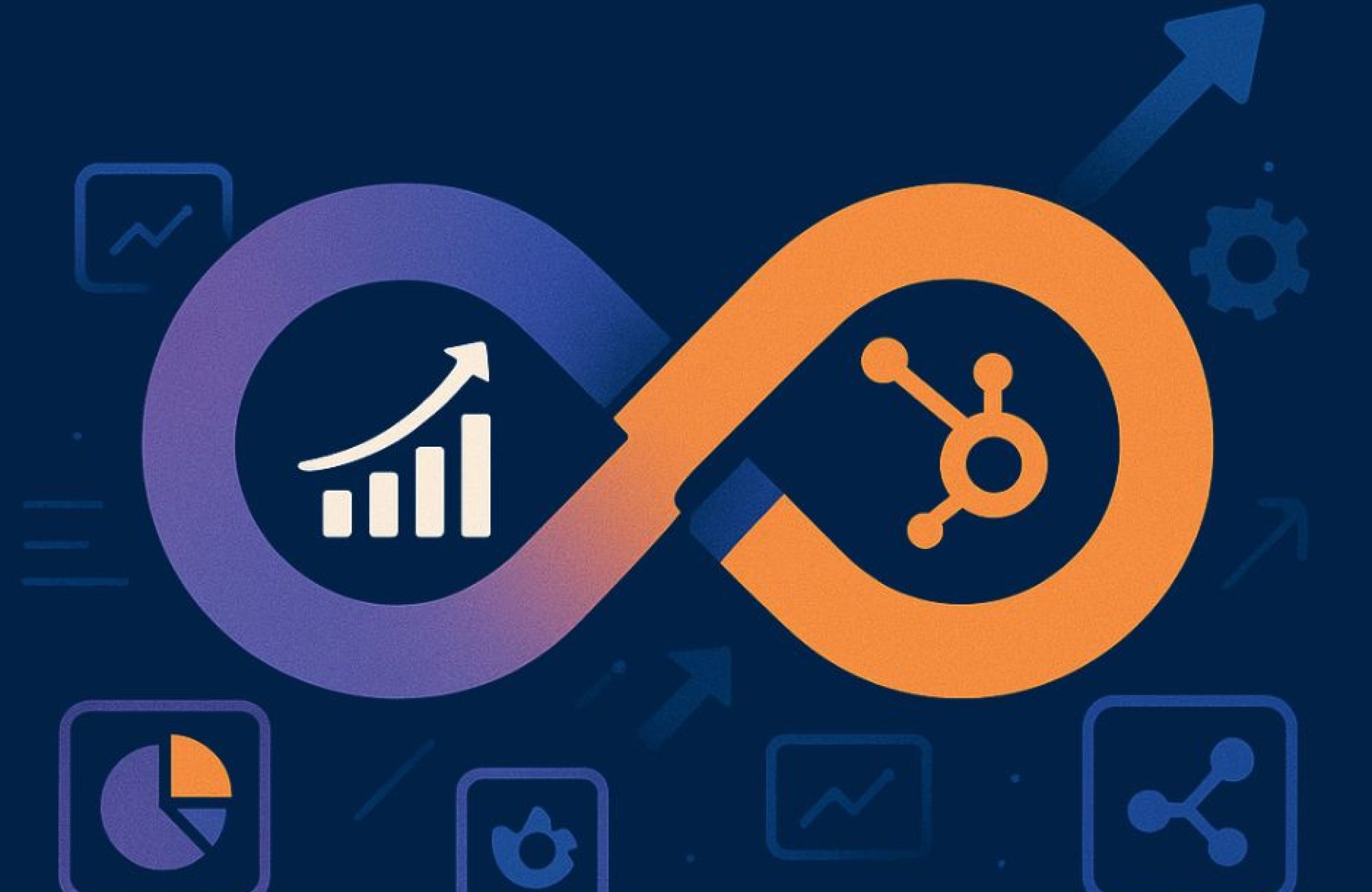
The RevOps Revolution: Analyzing the Rise of Integrated Platforms and HubSpot's Strategic Play
Beyond the Buzzword – Why RevOps is Reshaping Business
In the dynamic landscape of modern business, a common, costly pain point persists: the entrenched disconnect between Sales, Marketing, and Customer Service teams. Operating in their own silos, these crucial departments often use different tools, manage separate datasets, and pursue unaligned goals. The result? A fragmented and broken customer experience, internal friction, and, ultimately, significant lost revenue.
This challenge has given rise to a transformative strategic shift known as Revenue Operations (RevOps). More than just a new department, RevOps is a holistic, data-driven mindset focused on aligning all revenue-generating teams – Marketing, Sales, and Service – around a single customer journey and unified objectives. It’s about optimizing the entire revenue engine, from initial lead generation to customer retention and advocacy.
The technological answer to this strategic imperative is the emergence and explosion of dedicated RevOps platforms. These integrated solutions promise to break down silos, unify data, and automate the operational complexities that hinder growth. This post will analyze this pivotal trend, exploring the forces driving its rise and examining HubSpot’s powerful position as a leading all-in-one RevOps solution.
What is Revenue Operations (RevOps)? A Quick Primer
The traditional model of separate Sales Ops, Marketing Ops, and Service Ops teams, each optimizing their own slice of the customer journey, often creates more problems than it solves. This realization is precisely “the why” behind RevOps – a shift from fragmented to a unified operational function.
RevOps champions a single view of the customer and a cohesive strategy across the entire revenue funnel. It operates on four core pillars:
People: RevOps prioritizes fostering cross-functional alignment among Marketing, Sales, and Service teams. It promotes shared goals, unified KPIs, and collaborative processes, breaking down internal barriers to create a seamless customer experience.
Process: It involves meticulously mapping and optimizing the entire customer lifecycle, from the very first touchpoint and lead qualification through sales conversion, onboarding, ongoing support, renewal, and even advocacy. The goal is a smooth, efficient, and repeatable journey.
Data: A cornerstone of RevOps is establishing a single source of truth for all revenue and customer data. This means centralizing information, ensuring data quality, and creating consistent reporting across all touchpoints, enabling accurate insights and forecasting.
Technology: RevOps is responsible for implementing, integrating, and managing the entire tech stack that powers the people, processes, and data. This often involves consolidating tools and ensuring they work harmoniously.
The end goal of RevOps is clear: to drive predictable revenue growth, significantly improve operational efficiency across the entire customer journey, and create a truly seamless and delightful customer experience that fuels retention and advocacy.
The Tipping Point: Why RevOps Platforms are Exploding in Popularity
Several critical business problems have converged to create the perfect storm for the rapid adoption of integrated RevOps platforms:
Problem 1: Tech Stack Bloat: The average company today uses dozens, if not hundreds, of SaaS tools. This proliferation creates immense complexity, redundant features, spiraling costs, and, most critically, integration nightmares that require constant maintenance.
Problem 2: Data Silos: With each department often using its own specialized tools, vital customer and operational data gets trapped in disparate systems. This leads to inconsistent data, a fragmented view of the customer, inaccurate reporting, and ultimately, poor decision-making rooted in incomplete information.
Problem 3: The Demand for Customer-Centricity: Modern buyers expect a seamless, personalized, and consistent experience across every interaction. They don’t care about your internal departmental boundaries. Delivering this level of customer-centricity is virtually impossible when your internal teams and systems are disjointed.
RevOps platforms emerged as the direct answer to these pervasive issues. They promise to solve these problems by consolidating essential tools into a unified ecosystem, providing a single source of truth for all customer data, and enabling a holistic, 360-degree view of the customer journey that empowers truly customer-centric operations.
Enter the All-in-One: HubSpot’s Evolution into a RevOps Powerhouse
HubSpot’s journey is intrinsically linked to the rise of RevOps, making it a natural contender in this space.
From Funnel to Flywheel: HubSpot’s pivotal shift from the linear marketing/sales funnel model to the cyclical “Flywheel” framework was a philosophical declaration of its RevOps intent. The Flywheel places the customer at the absolute center, recognizing that delighting existing customers drives retention, referrals, and new growth. This model inherently promotes a RevOps philosophy by forcing Marketing, Sales, and Service teams to work in a continuous, collaborative loop.
The Building Blocks: HubSpot’s strength always lay in its unified CRM platform. From its inception, the vision was to provide a single database for all customer interactions. This foundation allowed HubSpot to meticulously build out a comprehensive front-office suite:
Marketing Hub: For attracting and engaging leads.
Sales Hub: For converting leads into customers.
Service Hub: For delighting customers and fostering loyalty.
CMS Hub: For building integrated websites that serve the entire customer journey. All operating on that single, unified customer view.
The Final Piece of the Puzzle: Operations Hub: While HubSpot always facilitated alignment, the dedicated launch of Operations Hub solidified HubSpot’s explicit entry into the RevOps platform space. Operations Hub acts as the “glue” that binds the entire HubSpot ecosystem together, providing the sophisticated capabilities needed for true operational excellence:
Data Sync: Ensures bi-directional data flow between HubSpot and virtually any other business system.
Programmable Automation: Allows for custom-coded workflows and webhooks to automate even the most complex, bespoke business processes.
Data Quality Automation: Automates critical tasks like deduplication, formatting, and data validation, ensuring data integrity across the platform.
With Operations Hub, HubSpot transformed from a suite of integrated tools into a comprehensive, all-in-one RevOps powerhouse capable of managing the entire customer lifecycle from a single, unified platform.
Analyzing HubSpot’s Position: Strengths and Challenges
HubSpot’s evolution into a RevOps platform is strategic, but how does it stack up in the competitive landscape?
Strengths:
Unified Platform & Single Source of Truth: This is HubSpot’s undeniable core value proposition. Operating on one data model with one login and one intuitive user interface for Marketing, Sales, and Service provides unparalleled alignment and a true 360-degree customer view.
Ease of Use & Accessibility: HubSpot maintains its reputation for user-friendliness. This lower barrier to entry makes it highly accessible for small to mid-market companies that might lack large, dedicated ops teams or extensive technical resources for complex integrations.
The Flywheel as a Built-in Framework: The entire platform is philosophically designed around the Flywheel model, inherently promoting RevOps principles and encouraging continuous customer delight.
Powerful Ecosystem: Despite being all-in-one, HubSpot boasts a vast marketplace of certified integrations (App Marketplace) for essential tools that don’t live natively within HubSpot, ensuring flexibility.
Challenges & Considerations:
Depth vs. Breadth: The common “Jack of all trades, master of none?” argument sometimes surfaces. While HubSpot offers comprehensive functionality, some enterprise-level businesses might find that a highly specialized, best-of-breed point solution (e.g., Salesforce for extremely complex enterprise sales, or dedicated analytics platforms) offers more granular depth in a single functional area than a specific HubSpot Hub.
Enterprise Scalability: Historically perceived as primarily for SMBs, HubSpot has made significant investments in enterprise-grade features (e.g., advanced security, permissions, programmable automation, datasets). However, overcoming the perception and competing with established enterprise players remains an ongoing push.
Cost at Scale: As companies grow, adding more Hubs, increasing contact limits, and leveraging advanced features can lead to a significant investment. For very large enterprises, the cumulative cost can be a notable factor compared to potentially more modular, à la carte solutions.
Fierce Competition: HubSpot operates in a fiercely competitive market. Key competitors include:
Salesforce: The undisputed platform giant, which also offers a vast suite of clouds (Sales Cloud, Service Cloud, Marketing Cloud) that can be integrated to achieve a similar end.
Specialized RevOps Tools: Companies like Clari (revenue intelligence), Gong (conversation intelligence), and LeanData (lead routing/orchestration) offer deep functionality in specific RevOps areas and often integrate with other CRMs, providing alternative best-of-breed strategies.

The Future of RevOps and HubSpot’s Next Moves
The RevOps revolution is far from over. Several key trends will shape its future, and HubSpot is strategically positioning itself within them.
Trend 1: AI-Powered Insights: Artificial intelligence will play an increasingly critical role. We’ll see AI enhancing forecasting accuracy, automating more complex data cleansing, proactively identifying at-risk customers, and streamlining decision-making through predictive analytics. HubSpot is actively investing in AI capabilities across all its Hubs, from content creation to sales forecasting.
Trend 2: Deeper Consolidation: The market will continue to consolidate. Businesses are weary of tech stack bloat and the associated complexities. They will demand fewer, more powerful, and genuinely integrated platforms that can handle the majority of their revenue operations needs natively.
HubSpot’s Likely Trajectory: We predict HubSpot will continue to deepen the functionality and sophistication of its individual Hubs, particularly within the Professional and Enterprise tiers. Its push further into the enterprise market will intensify, and AI will be a core differentiator, enhancing its unified platform advantage to make it even more intelligent and automated.

Is HubSpot the Right RevOps Platform for You?
Revenue Operations is no longer a buzzword; it’s a critical business function essential for scalable, predictable growth and superior customer experiences. Integrated platforms like HubSpot are leading this charge, providing a compelling answer to the complexities of disconnected revenue teams and tech stacks.
HubSpot emerges as an exceptionally strong contender, especially for businesses that prioritize ease of use, a true single source of truth for customer data, and strong, out-of-the-box alignment between Marketing, Sales, and Service. Its philosophical foundation (the Flywheel) and the comprehensive nature of its integrated Hubs (especially with Operations Hub as the glue) make a powerful case.
The key takeaway for any business is to evaluate your own needs. Assess your company’s operational maturity, the complexity of your current tech stack, your team’s technical capabilities, and your overarching strategic goals. Is a unified, all-in-one platform like HubSpot the right path to drive your revenue operations forward, or does a more fragmented, best-of-breed strategy better suit your needs? The RevOps revolution is here, and choosing the right platform is your next strategic play.
Is your business ready to embrace the RevOps revolution and unify your revenue teams?
Mobius NEXT specializes in helping companies strategically implement and optimize HubSpot as their RevOps platform. From aligning your Marketing, Sales, and Service teams to leveraging Operations Hub for seamless automation and data integrity, we guide you every step of the way.
Schedule a consultation with Mobius NEXT to assess your RevOps needs and explore how HubSpot can transform your revenue engine.
Resources:
HubSpot RevOps Page: https://www.hubspot.com/revenue-operations
HubSpot Operations Hub: https://www.hubspot.com/products/operations
The Flywheel Model Explained: https://www.hubspot.com/flywheel
HubSpot Blog (RevOps, Sales, Marketing sections): https://blog.hubspot.com/operations/what-is-revops



